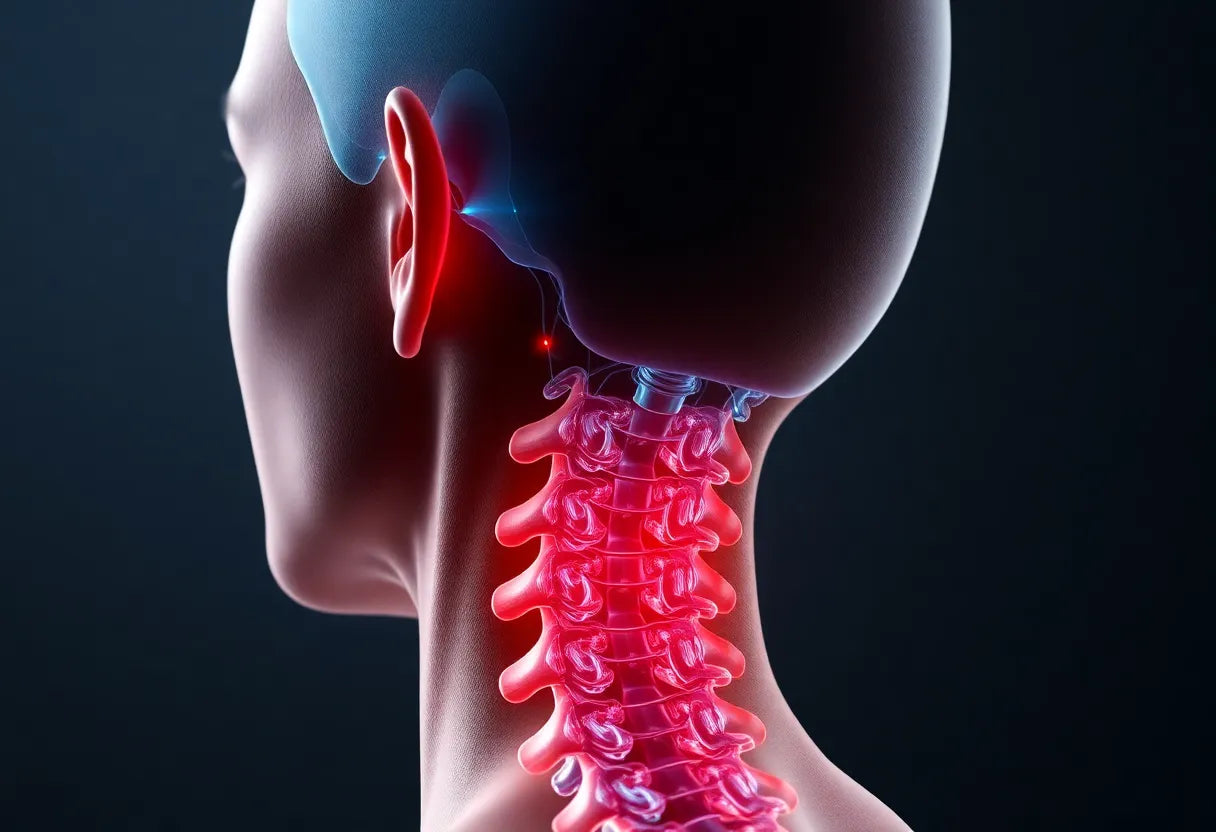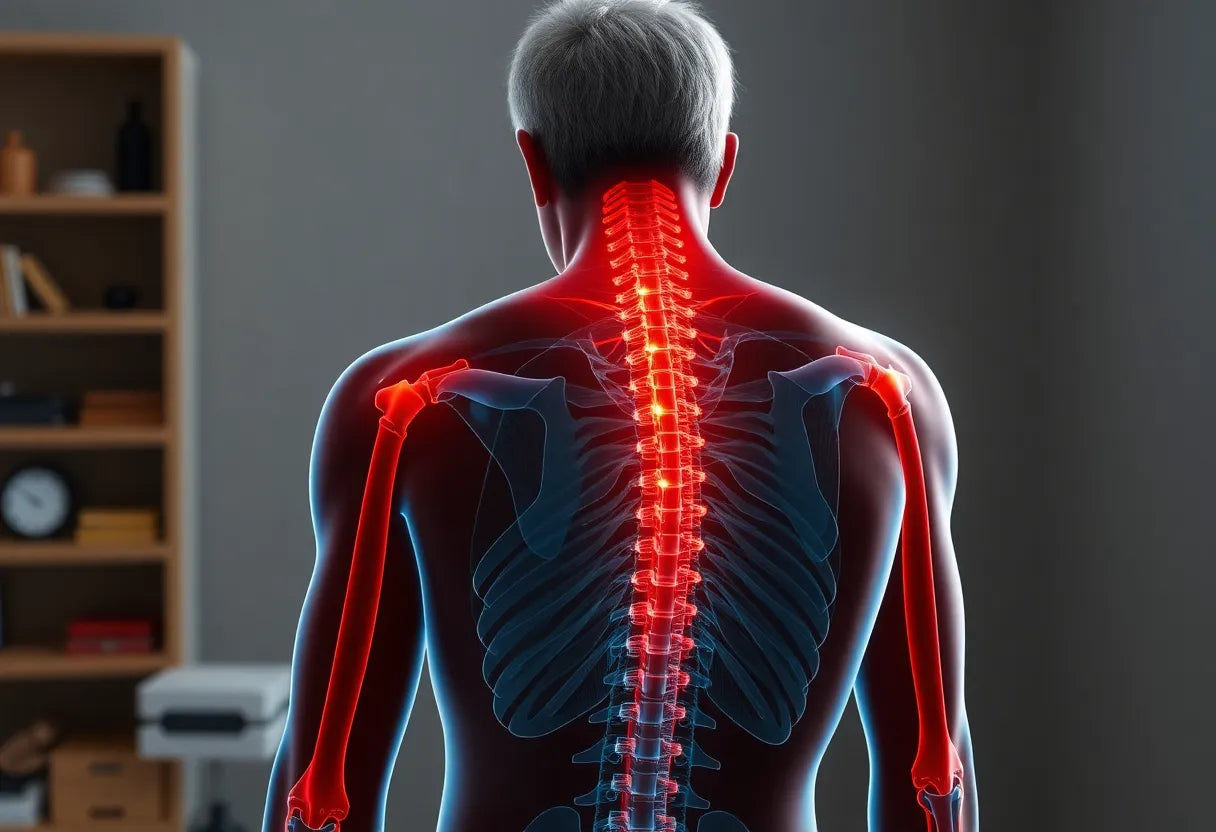Inflammation of the sciatic nerve, commonly referred to as sciatica, is a prevalent condition that can significantly impact one’s quality of life. Characterized by pain, weakness, numbness, or tingling that radiates along the path of the sciatic nerve, sciatica often arises from irritation or inflammation. The sciatic nerve, the largest nerve in the human body, extends from the lower back down to the legs, playing a crucial role in connecting the spinal cord to the leg muscles. When this nerve becomes inflamed, it can lead to debilitating symptoms that interfere with daily activities.
Understanding sciatic nerve inflammation
Sciatica is not only common but also a condition that can affect individuals of various ages and lifestyles. The prevalence of sciatica underscores the importance of understanding its underlying causes and symptoms. Often, the inflammation of the sciatic nerve results from conditions such as a herniated disc, spinal stenosis, or degenerative disc disease. These conditions can compress or irritate the nerve, leading to the classic symptoms of sciatica. The pain associated with sciatic nerve inflammation can vary in intensity and may worsen with certain movements, making it essential for sufferers to seek effective relief methods.
The importance of natural relief
In recent years, there has been a growing interest in natural and holistic approaches to managing sciatic nerve inflammation. Many individuals are seeking alternatives to traditional medical treatments, which often involve medication or surgery, due to their potential side effects and invasiveness. Natural relief methods offer a non-invasive, lifestyle-oriented approach that can alleviate symptoms without the reliance on pharmaceuticals.
Exploring natural relief options can empower individuals to take control of their health and well-being. These methods often focus on addressing the root causes of sciatic nerve inflammation through lifestyle modifications, such as improving posture, engaging in targeted exercises, and making ergonomic adjustments. By adopting these strategies, individuals can potentially reduce the frequency and severity of sciatica episodes, leading to improved overall health and quality of life.

Lumbar support belt
Provides adjustable support and relief for the lower back and sciatica.
As we delve deeper into the causes, symptoms, and natural relief strategies for sciatic nerve inflammation, it becomes evident that a comprehensive understanding of the condition is essential for effective management. By embracing holistic approaches, individuals suffering from sciatica can find relief and regain their ability to engage in daily activities without the burden of persistent pain.
Causes and risk factors of sciatic nerve inflammation
Understanding the root causes of sciatic nerve inflammation is crucial for effective management and prevention. One of the most common culprits is a herniated disc. This occurs when the soft center of a spinal disc pushes through a crack in the tougher exterior casing, pressing on the sciatic nerve. This pressure can lead to inflammation and the characteristic pain of sciatica.
Another significant cause is spinal stenosis, a condition where the spaces within your spine narrow, putting pressure on the nerves. This is often related to aging and can contribute to sciatic nerve compression. Similarly, degenerative disc disease can result in the gradual deterioration of the spinal discs, increasing the likelihood of nerve impingement.
Additional risk factors include piriformis syndrome, where the piriformis muscle in the buttocks irritates the sciatic nerve, and external compression from prolonged sitting or heavy lifting. Pregnancy can also increase pressure on the sciatic nerve due to the added weight and changes in posture.
Symptoms of sciatic nerve inflammation
The symptoms of sciatic nerve inflammation can vary widely among individuals but often include radiating pain from the lower back or buttocks down one leg. This pain can be sharp, burning, or feel like an electric shock. Other symptoms may include tingling, numbness, or muscle weakness in the affected leg. These symptoms can be exacerbated by movements such as bending, twisting, or even sneezing.
It's important to note that the severity of pain can differ from person to person. Some may experience mild discomfort, while others endure debilitating pain that hinders daily activities. Recognizing these symptoms early can help in seeking appropriate management strategies.
Conservative management and natural relief strategies
For those seeking natural relief from sciatic nerve inflammation, physical therapy and exercise are often recommended as first-line treatments. Engaging in targeted exercises can improve posture, strengthen core muscles, and reduce pressure on the sciatic nerve. A physical therapist can design a personalized exercise program to address specific needs and limitations.
Cold and heat therapy is another effective method for managing inflammation and pain. Applying cold packs can help reduce inflammation and numb the area, while heat therapy can promote blood flow and relax tight muscles. Alternating between cold and heat may provide optimal relief.
While medications such as NSAIDs (nonsteroidal anti-inflammatory drugs) and acetaminophen can offer pain relief, they do not address the underlying inflammation. Therefore, they should be used as a complement to other natural strategies rather than a primary treatment.
Incorporating these natural relief methods into daily life can empower individuals to manage their sciatica symptoms effectively. By focusing on lifestyle modifications and non-invasive treatments, those suffering from sciatic nerve inflammation can find relief and improve their overall quality of life.
Alternative and complementary therapies for sciatic nerve inflammation
For those exploring additional options beyond traditional treatments, alternative and complementary therapies can offer promising avenues for relief from sciatic nerve inflammation. Acupuncture is one such therapy that has gained popularity. By inserting thin needles into specific points on the body, acupuncture aims to stimulate nerves and muscles, potentially reducing pain and inflammation.
Chiropractic care is another option that focuses on spinal alignment. Chiropractors use manual adjustments to relieve pressure on the sciatic nerve, which may alleviate pain and improve mobility. Similarly, massage therapy can help relax tense muscles, improve circulation, and reduce nerve compression, offering relief from discomfort.
While these therapies can be beneficial, it's crucial to consult with healthcare professionals before pursuing them. They can help determine the most appropriate and safe options based on individual health needs and conditions.
Self-care and ergonomic adjustments to manage sciatica
Incorporating self-care practices and ergonomic adjustments into daily routines can significantly impact the management of sciatic nerve inflammation. One effective strategy is activity modification. Avoiding prolonged sitting and incorporating regular movement breaks can prevent exacerbation of symptoms. Simple actions like standing up, stretching, or walking around every hour can help relieve pressure on the sciatic nerve.
Optimizing workspace ergonomics is another key component. Using supportive chairs that promote good posture and considering standing desks can reduce strain on the lower back. Ensuring that computer screens are at eye level and keyboards are positioned to allow for relaxed shoulders can also contribute to a more ergonomic setup.

Men's Posture Shirt™ - Black
Patented shirt that activates muscles and helps correct posture, reducing back/neck pain.
By making these adjustments, individuals can create a more comfortable environment that supports their overall well-being and reduces the risk of future sciatic nerve inflammation episodes.
Conclusion
Finding relief from sciatic nerve inflammation naturally involves a combination of understanding the condition, exploring various treatment options, and making lifestyle adjustments. By embracing alternative therapies, practicing self-care, and optimizing ergonomics, individuals can effectively manage their symptoms and improve their quality of life. It is important to consult healthcare professionals to tailor these strategies to individual needs, ensuring safe and effective management of sciatica. As you explore these natural relief options, remember that a holistic approach can empower you to regain control over your health and daily activities.
Frequently Asked Questions
What is the fastest way to relieve sciatic nerve inflammation?
Combining physical therapy, cold/heat therapy, and ergonomic adjustments can provide prompt relief, but results vary depending on individual conditions.
Can sciatica heal on its own?
Many cases of sciatica improve with time and conservative management, but persistent or severe symptoms should be evaluated by a healthcare professional.
Are there any exercises to avoid with sciatica?
High-impact activities and exercises that exacerbate pain should be avoided. Consult a physical therapist for a personalized exercise plan.
How can I prevent future episodes of sciatic nerve inflammation?
Maintaining a healthy weight, practicing good posture, and engaging in regular physical activity can reduce the risk of recurrence.
When should I consider surgery for sciatica?
Surgery is typically considered for severe cases with significant neurological deficits or when conservative treatments fail to provide relief.
Källor
- Tylenol. "Sciatica Pain Relief." Tylenol.
- Stafford, M.A., Peng, P., & Hill, D.A. (2007). "Sciatica: A Review of History, Epidemiology, Pathogenesis, and the Role of Epidural Steroid Injection in Management." British Journal of Anaesthesia.
- Back Center NJ. "How to Treat Sciatic Nerve Pain." Back Center of New Jersey.
- Healthdirect. "Sciatica." Healthdirect Australia.
- Hospital for Special Surgery. "Sciatica." HSS.
- Ropper, A.H., & Zafonte, R.D. (2018). "Sciatica." StatPearls.
- Cleveland Clinic. "Sciatica." Cleveland Clinic.
- Mayo Clinic. "Sciatica: Diagnosis & Treatment." Mayo Clinic.
- Mount Nittany Health. "Sciatica Self-Care: How to Ease Leg and Back Pain at Home." Mount Nittany Health.
- Mayo Clinic. "Sciatica: Symptoms & Causes." Mayo Clinic.


















